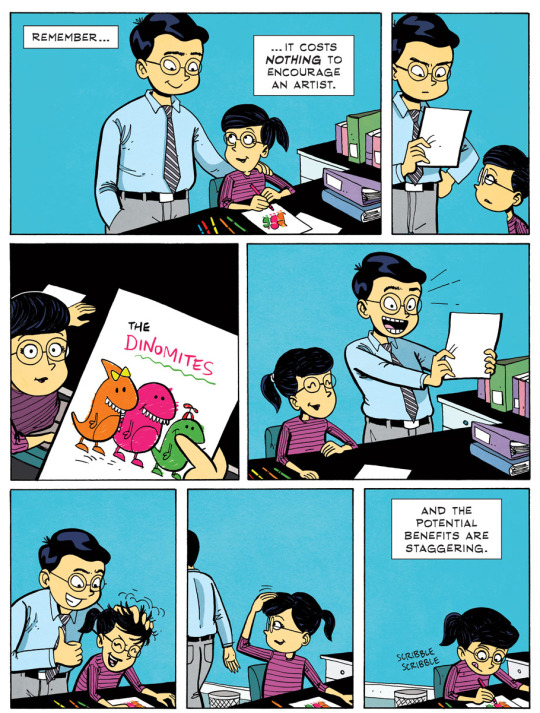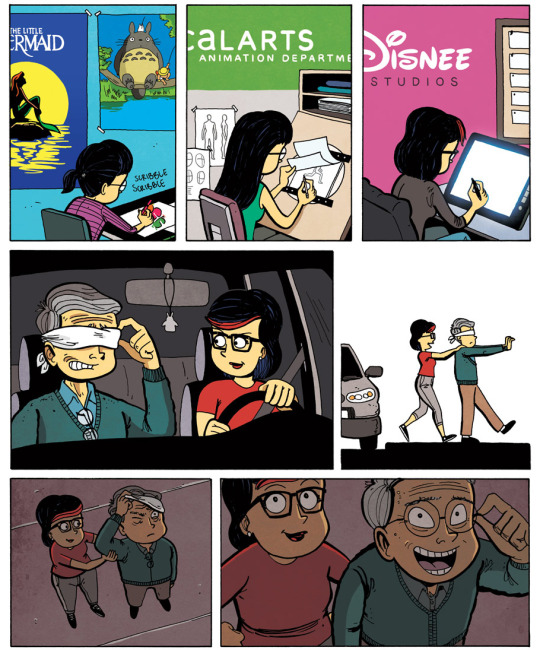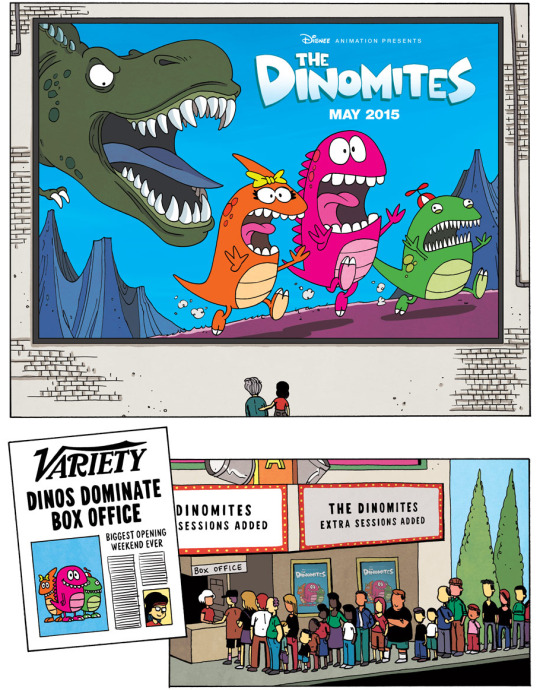Cerebral Palsy. Disability and accessiblity. I do not speak for everyone in the disability community. My opinions are my own and based on my expirences. No hate. Everyone is welcome. Feel free to follow and message.
Don't wanna be here? Send us removal request.
Photo


also it helps me walk or whatever
[ID: a digitally drawn two-panel comic. / Image 1: Text reads: “How I expected using a cane would feel:” Panel depicts a miserable person in tattered clothes, hunched over a cane and shaking as she walks. / Image 2: Text reads: “How it actually feels:” Panel depicts the same person, now standing tall and wearing flowing wizard robes and a long white beard. Her cane is at her side, glowing with magic, and she looks confident and powerful. /End ID]
153K notes
·
View notes
Text
Reviewing Disability in Books: A Curse So Dark and Lonely
By Brigid Kemmerer Chapter 6-10
(may contain spoilers)
A Curse So Dark and Lonely is a Beauty and the Beast retelling, featuring a disabled character named Harper with Cerebral Palsy. One night on the streets of DC, Harper is magically kidnapped by a stranger and transported to the cursed Kingdom of Emberfall where a mysterious monster plagues it’s lands. There she meets the heir of Emberfall, who has just taken her captive, Prince Rhen.
Again we see Harper’s strength and determination as she plans another escape attempt after being locked in a room after her first attempt goes awry. After having found a dagger, she uses the element of surprise to her advantage against her captor. However, he is prepared this time and knows not to underestimate her. She can (and does!) save herself as we see in a later chapter. What this book does right: While Harper’s captors are unaware of her disability just yet, I love that she is taken seriously and seen as a legitimate threat rather than someone weak and feeble who can be overpowered. Later in chapter 6, as a show of trust, she is even given a small lesson and shown how to properly hold the dagger so she wont be so easily disarmed in the future. I don’t know of any book that shows training a disabled character in self defense, and I really appreciate that here.
During Chapter 8 we see Harper’s second escape attempt where she is once again showing her strength and adapting skills as she leaps across a roof and climbs down a trellis. There are more small details added that are often missed, including mentions of how the cold winter weather effects Harper’s CP, and makes her body more painful and tense (a detail that is often not talked about at all let alone addressed in a book!)
What I would improve: There are a handful of moments in the book so far where we see Harper fighting her CP and shouting at her body how it NEEDS TO JUST WORK. Internalized ableism is real, and not liking your CP is valid, however the amount of times it has been brought up in a short span - Harper yelling and cursing at her CP as if it will magically make her move faster, is a little uncomfortable for me.
We see more of Harper’s internalized ableism come out when she says “if this woman can be fierce with a kid on her hip my body can stand up.” She then follows with how she literally forces her CP side into working.
This just isn’t how it works. We can’t force our bodies to do something it can’t or won’t by determination and willpower - Especially when we are fighting several other factors like exhaustion, stress, and freezing temperatures. Just because someone Non Disabled does one thing, doesn’t mean a disabled person can or should do something of equal or lesser value. Being forced to push ourselves past our own capabilities and limits is a real thing that happens - and it can have horrible and dangerous consequences.
Conclusion: When this book gets it right, it does it really well. I appreciate Harper’s ability to fight and save herself rather than relying on others. However, I side eye seeing Harper push herself in comparison to a non disabled character and wish her internalize ableism hadn’t been reinforced here as a positive show of strength. END. Did you miss part one? Get caught up now! CHAPTERS 1-5
7 notes
·
View notes
Text
Reviewing Disability in Books: A Curse so Dark and Lonely
By Brigid Kemmerer Chapter 1-5
(may contain spoilers)
A Curse So Dark and Lonely is a Beauty and the Beast retelling, featuring a disabled character named Harper with Cerebral Palsy. One night on the streets of DC, Harper is magically kidnapped by a stranger and transported to the cursed Kingdom of Emberfall where a mysterious monster plagues it’s lands. There she meets the heir of Emberfall, who has just taken her captive, Prince Rhen. Harper is a strong, resourceful character who is constantly adapting and problem solving. She is not just a helpless victim who goes easily with her kidnappers. She fights and fights well. Her personality, and emotional traits, (guarded and resilient to trust others) is relatable on many fronts, especially when factoring in disability.
What this book does right: I was hesitant going into this book. The premise of having a disabled Belle character fall in love with a toxic Prince, made me hesitant given abuse statistics for disabled women, and how society often sets us up to stay in toxic relationship, or to be the teachers towards toxic individuals.
But right away, its easy to tell there is a difference in this story compared to counter parts such as Say What You Will. It is evident the author took the time to work with an individual with CP. For example, in Chapter 4 we watch as Harper adapts to mount a horse during an escape attempt and later in Chapter 5, Harper calls Rhen out for staring who, unknowingly, assumes Harper’s limp and inwardly turned ankle is the result of an injury from her kidnapping and attempted escape earlier.
“I feel you looking at me,” she says. “Stop it.”
She is so attuned to the feeling of being watched, and this hits spot on. The little details that only those with CP would know, such as the way Harper’s spasticity engages more during stress and fatigue, help this book to stand out.
What I would improve: Side note, one thing I noticed was Cerebral Palsy is never capitalized when mentioned. This is something I see most non disabled writers do and it baffles me a bit to not capitalize the name of a disability. Harper’s CP (presumed Hemiplegia) is different than mine and at times can be hard for me to discern the accuracy of things like the way Harper fights in hand to hand combat while maintaining balance and movement. Others with Hemiplegia would be able to give a more accurate opinion. Harper mentions a few times in passing that she’s not strong. (once with her brother who is your classic “It’s too dangerous, Nemo” over-protector) This feels odd and out of place given Harper has shown plenty of times just how strong and capable she is. She’s fought her kidnappers, and leapt across a roof and climbed a trellis to escape! Perhaps this is meant as your classic “I don’t believe in my own strength,” but it doesn’t read that way, and feels contradictory to the character.
Again this same feeling comes up during Harpers escape attempt, and adapting to mount a horse. She mentions having learned to ride as therapy and that riding gives her a strength and power she otherwise doesn’t have.
Conclusion: There are a few side-eye moments, sure. But so far this book does an ok job of writing a fairly believable character with CP, and is already much better than some more popular disability reads. END. Find out what happens next! Part Two up NOW. CHAPTERS 6-10
6 notes
·
View notes
Text
I started reading, A Curse so Dark and Lonely by Brigid Kemmerer earlier this week. This book is a fantastical retelling of Beauty and the Beast featuring a character with CP as a stand in for Belle.
I’ve heard a lot of love and praise for this book but–having CP myself and a general mistrust in assumingly non disabled authors writing disabled stories– I was hesitant. After having this book on my shelves for more than a year now, I finally took the plunge–and I was a little surprised. As it CP awareness month, I’ve decided to review this book by chapters and post here, discussing what the book does right and what it doesn’t. If you are like me, curious but hesitant about this book, please stay tuned.
#Cerebral Palsy#CP#CP Awareness Month#Disability#Disability Rep In Books#Book Blog#Reading Blog#Readers#Reading#Disability Books#Beauty and The Beast#Retelling
4 notes
·
View notes
Text
L is for Language
Language has always held a special space in my life. My late grandfather was a newspaper editor. I devoured books growing up, (still do) I love Twitter because of bite size words. Y’all get it. ANYWAY, today’s post revolves around disability language. I’m no expert and I’m still learning. Words like the R word, “special needs,” “differently abled”are all cutesy phrases used to frame disability/chronic health issues as something palpable for nondisableds.
HOWEVER, if someone is disabled they can call themselves anything they choose. For years, people without disabilities have held power in how the disabled communities refer to ourselves.
I was scolded many a time for identity first (disabled person) language and I’m OVER IT!
More to come, stay tuned, friends!
10 notes
·
View notes
Text
How messed up and disgusting to have your mobility device put by literal trash!
Mine were under the table, out of the way. The staff only noticed when they accidently kicked them. I apologized, and was about to pass them to the other side by my sister to hold, but before I could say a word, they reached down and grabbed them and walked off saying. “I’m going to move these.” It was awful. Don’t touch mobility devices without permission first, for any reason!
If you think moving someone’s mobility device away from them is a good idea, you don’t understand the purpose of the device to begin with.
We use those things so we can be independent. So we can move with ease. So we can navigate our world without someone’s assistance. When you move our devices away from us you are taking all of that away. You are making us ask for help to move. You are removing the intent of us having those things in the first place. You make us dependent.
Now, sometimes devices do need to be moved, but they should only be moved for safety first, and only at the person’s consent. Don’t just move them because you think they’re in your way.
Instead, be more aware of your surroundings and realize that those devices are there for a reason, and sometimes disabled people need to take more space than others. Be respectful and give them that space.
965 notes
·
View notes
Text
I’ve had the same thing happen to me. (Its actually what prompted the original post)
Except the person moved my crutches all the way to the other side of the restaurant by the kitchen. They leaned them up against the wall, too, by a door. Which, by my logic, made them even more of a risk to the staff then before if they fell over, which they do often when balanced on a wall like that.
If you think moving someone’s mobility device away from them is a good idea, you don’t understand the purpose of the device to begin with.
We use those things so we can be independent. So we can move with ease. So we can navigate our world without someone’s assistance. When you move our devices away from us you are taking all of that away. You are making us ask for help to move. You are removing the intent of us having those things in the first place. You make us dependent.
Now, sometimes devices do need to be moved, but they should only be moved for safety first, and only at the person’s consent. Don’t just move them because you think they’re in your way.
Instead, be more aware of your surroundings and realize that those devices are there for a reason, and sometimes disabled people need to take more space than others. Be respectful and give them that space.
965 notes
·
View notes
Note
how do leg braces help the muscles of those w/ cp?
The purpose of AFO leg braces are to help position and support the person’s feet and ankles to improve balance and walking which help the other muscle groups work with less effort. They can also help with spastic and tightness by keeping the foot and leg in a proper position.
15 notes
·
View notes
Note
hi! i'm writing a story about a disabled character who wears afo leg braces, but I'm trying to figure out if it makes sense. my character is a teenager, and all the orothotic sites i looked at only talked about children wearing afo leg braces. are they something you grow out of, or do some people need braces for longer? thank you!
People of all ages wear AFO leg braces.It’s just common to start wearing them young as a child. But it all depends on the disability. Some do stop wearing them as they get older, but for someone who has a disability like Cerebral Palsy, they can be worn all through life.
9 notes
·
View notes
Photo






KEVIN SMITH: It costs nothing to encourage an artist
771K notes
·
View notes
Photo

So I did a thing while self isolating....
Image description: Teal banner with paper airplanes and white writing reads, Camp Nanowrimo 2020 Winner.
3 notes
·
View notes
Note
hi, i have cerebral palsy as well and i was hoping you’d be able to give me some advice on something. so i don’t have a wheelchair but i do have leg braces (which i wasn’t wearing today) and i rarely have any pain, but today i was in the middle of a math exam and i was writing and suddenly i got extremely stiff throughout my entire body, and i had absolutely zero control over it. i couldn’t move my fingers and it was like the muscles in my legs pulled really hard. i never had this, is it normal?
This sounds like a very intense muscle spasm, which is super common and normal for people with CP.
2 notes
·
View notes
Text
Disabled people need to be around other disabled people. We need it to know we’re not alone. We need it to understand ourselves and our symptoms.
Without it, we are lost.
213 notes
·
View notes
Text
Abled People are WEIRD.
*Puts sweater on from being cold*
ABLES: Do some work! Exercise! Maybe then you wouldn’t be so cold.
33 notes
·
View notes
Text
Were you able to sleep before the sunrise? or did you toss and turn as the shadows danced along the walls and seeped into the skin beneath your eyes like those salt water tears.
12 notes
·
View notes
Text
An artist : Aw man! I saw my arts were reposted on Instagram. I’ve asked them to take my arts down but they ignored me.
Me : Say no more! Click this link, then click ‘fill out this form’. Fill the form and wait for about 1-2 days, the staffs will remove the image you were reporting from the reposter’s account :^)
361K notes
·
View notes
Text
Disabled students DO NOT need to walk at their graduation ceremonies for their graduation to be meaningful.
In case any disabled students out there getting ready to graduate need to hear this. If you feel pressured to walk at graduation or just need to be reassured, it doesn’t matter if you walk at graduation. You graduating school is a huge accomplishment already. Period. Even if you don’t walk across that stage like everyone else, your moment will be just as amazing as the others, and you should be so incredibly proud of yourselves for making it this far.
672 notes
·
View notes